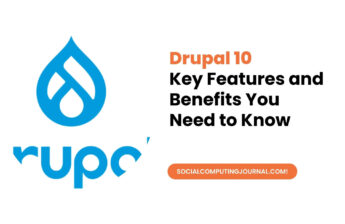The Scrum methodology in Software Testing is used when building applications involving complex software development processes. Scrum provides a tangible and easy solution to the execution of complicated team tasks and allows the development team to monitor the software development factors for better performance, quality, usability, etc. It also brings in more transparency, adaptation, testing, and inspection in software development that avoids glitches in timely delivery and complexity issues.
Contents
Testing in Scrum:
Testing is done using the Scrum methodology to ensure that the requirements of the software application are met and covers tests for parameters that are non-functional like usability, security, and performance. Scrum does not have an active process tester, and testing is achieved using developers using the Unit Test. If a project is complex, then dedicated test teams may be used.
Key Features:
Scrum has some unique key features:
- Scrum works within the Agile framework with short fixed release schedules/cycles called sprints. Each sprint has an adjustable scope which helps the teams collectively address any changes to the development needs in a time-bound manner. Thus, a work-release may have multiple sprints and a Scrum project multiple Release Cycles.
- Scrum has a sequence of repeated events, meetings, milestones, etc.
- The practice of implementing and testing the new requirements is called a story and ensures timely work releases after each sprint cycle.
The 3 Pillars of the Scrum Methodology are as follows:
Scrum Roles
- Scrum Team
- Product Owner PO
- Scrum Master SM
Scrum Artifacts
- Sprint backlog
- Product Backlog
- Burndown Charts
Scrum Ceremonies
- Planning of Sprints
- Review of Sprints
- Sprint Retrospectives
- Scrum Meetings (Daily)
Scrum Roles:
The 3 Scrum Testing roles are the Scrum Master, the Product Owner, and the Scrum Development Team.
| Product Owner (PO) | Scrum Master (SM) | The Scrum Team |
| Defines the product features. | Manages productivity and the team. | The Scrum team typically has equally responsible 5 to 9 members. |
| Decides the product release date and its features. | The SM maintains a scrum barrier and block-list, which he removes when facilitating development. | The team includes designers, developers, and at times testers. |
| The product features are in line with product profitability, market value, and client needs. | Coordinates all team functions and roles. | The members schedule and organize their work plans within the Scrum framework. |
| The PO bears the product profitability responsibility. | Shields team from diversions and external interference. | Each team member is equally responsible and must do all to help meet the sprint goals. |
| The PO may reject/accept the work-item results. | The SM conducts and invites the team to daily scrum meets, sprint planning, and review meetings. | Scrum meets are collective and collaborative meetings where all members take part in the reviewing in daily ceremonies. |
Scrum Artifacts:
The Scrum process has:
- Product Backlogs, whish is a scrum product’s user stories collection maintained and prioritized by the PO. Team members are encouraged to add to it with the PO’s approval.
- User stories are short functionalities explanations of the test system. For example, for health insurance providers, the user story may be – Using the online system for premium payments.
- Sprints are the time set for the user-story completion. These are decided by the PO and Scrum Team and typically last from 2 to 4 weeks.
- Release Backlogs are logs of releases. The time frame for the completion of several iterations is called a release. The PO with the SM decides which stories are in a release and completes the user story in the release backlog before every release.
- Sprint Backlogs are user stories set that need to be completed in a sprint. The sprint backlog never assigns work. Instead, the team members work and assign jobs on their own. The remaining work daily is updated and has the list of tasks to be performed in that sprint.
- Blocks List lists out the unmade decisions and blocks. It is owned by the SM and updated daily.
- Burndown charts represent the progress and the completed work processes in a graphical format of the features and stories not yet completed.
Scrum Ceremonies:
- Sprint Planning is important as the sprint starts with stories imported from the release backlog in a meeting hosted by the SM. The team and testers will estimate the time and effort needed to test the Sprint Backlog stories.
- Daily Scrum Meets are conducted by the SM and last for approx. 15 minutes. The team discusses the previous work completed, issues faced the next day’s work, etc., during a sprint. This allows for efficient work and progress tracking.
- Sprint Retrospective is a review meeting of the sprint hosted by the SM lasting 2 to 4 hours. The team discusses the lessons learned and the work progress of the previous sprint.
Scrum Testing:
Since no dedicated Testers are used in a Scrum Team, the testing of products is ongoing and happens during sprint planning, sprint meets, and sprint retrospective meetings. The Scrum methodology provides for collective and collaborative efforts of the entire team and hence speeds up the number of product releases to the market. Dedicated testers are only assigned when the testing involved is complex. Test reporting is done in the form of burndown charts and is again the joint efforts of the Scrum team under the tutelage of the SM and in collaboration with the PO.
The Bottom Line:
Do you want to learn more about Scrum in software engineering and earn your mca online degree certification?
Great Learning software engineering courses collaborate with one of the best engineering universities, JAIN (Deemed-to-be University). Plus, they have an enviable list of over 500 foremost hiring partners from different domains willing to snap you up when you finish.
Are you a fresh graduate or working professional looking for a career in software engineering? Do you wish to get software certifications and learn software engineering from global universities? The software sector is one of India’s top ten emerging sectors and is expected to have 30 lakh opportunities by 2025. Those who earned their certifications from Great Learning Courses make approximately 48% more in a salary hike than their counterparts because they are not merely more knowledgeable but adept at using their skills practically. Great Learning Courses are the best software development courses and career transition makers, with over 8000 people benefiting from their courses over several domains. Enroll today!
References:







